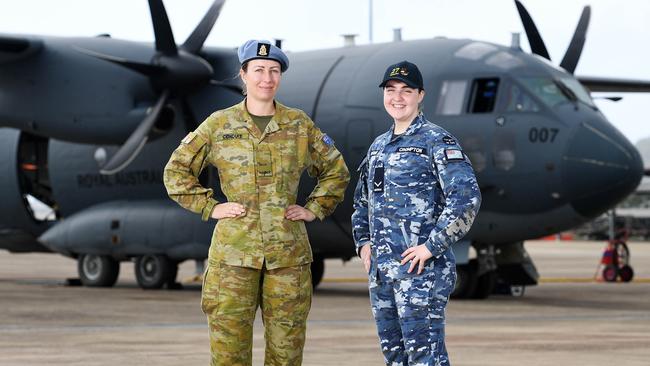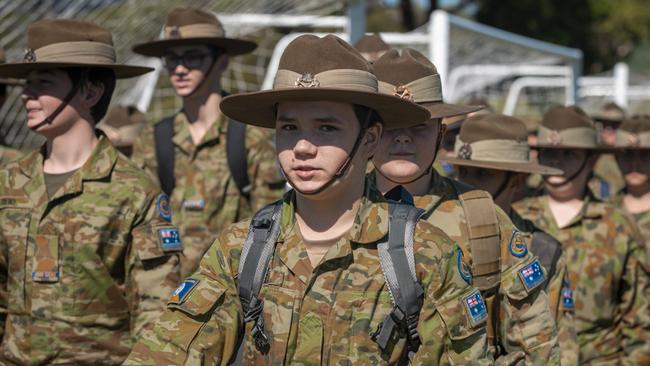Defence recruitment crisis: See how your state fares
The ADF is struggling to recruit the troops it needs and there are warnings it could get worse. See why and how your state compares.
The Australian Defence Force is struggling to recruit more than a fifth of its required personnel to meet future AUKUS fighting hardware capabilities.
And there are warnings it could get worse as a new outsourced human resources provider transitions to take over the recruitment program for the ADF, under a Budget allocated $1bn for the “modernisation” of the rank and file.
New figures show an overall dire recruitment picture with an average 1000 new personnel needed a year to meet capability targets endorsed by the Defence Strategic Review, but an intake of just 200 people.
The time it takes to recruit a single individual has already gone beyond one year for some with demands Defence sign up as many in two years from 2024 as it did in the 10 years leading up to 2022.

Queensland has emerged as the nation’s defence capital of Australia, now patriotically accounting for more than a third of all ADF recruits.
Defence is committed to increasing personnel by 18,500 full time by 2040, 12,500 specifically to job match the huge capability boost of new AUKUS hardware including operating new submarines, missiles and drones.
The increase represents about a 25 per cent boost to the ADF’s current strength of 60,000 personnel and comes despite the ADF not reaching recruitment targets for several years.
Defence achieved 98 per cent of recruitment targets in 2017/18, but this fell to 96 per cent in 2018/19, 88 per cent in 2020/21 and 76 per cent in 2021/22. This year is tracking worse.
Queensland now accounts for up to 36 per cent of all ADF new recruits, despite its population base being smaller than NSW and Victoria, which in comparison saw drops in recruitment and retention rates, and South Australia, which aims to be recognised as the premier defence state.
According to the figures, NSW has slipped to 27 per cent of total recruitment, with Victoria at 16 per cent of national totals and South Australia just 5 per cent.
From next month the world’s largest human resources providers, Adecco Australia, will take over the drive to find people to make 80,000 ADF and Defence civilian staff by 2040 - but there have been warnings there could be delays to individual sign-ups as the firm transitions into the role.
Part of the reason for the Sunshine State’s recruitment success is the number of defence bases and grassroots community campaigns.

Defence Personnel Minister Matt Keogh said Queensland schools remained very open to visits from Defence Force Recruiting, with students from years 9 to 12 years looking for trades in the military.
He said given Queensland’s significant Defence assets, many lived near a base or had personal relationships with personnel and their families.
“There’s no doubt we need to grow our Defence Force and while it’s fantastic to see Queensland leading the way, these numbers show there is scope to improve recruitment in other states,” he said.
Defence’s Head of People Capability Major General Wade Stothart said recruitment was a significant challenge.
“This financial year, year to date the forecast for the end of the financial year is 73 per cent of our recruiting targets,” he said.
“The raw numbers of targets are increasing for us as we try to grow, the raw numbers are holding steady but as a percentage they are dropping because we are trying to recruit more people. We are in challenging circumstances and we are not achieving the recruiting targets that we would like to,” he said.
More Coverage
Originally published as Defence recruitment crisis: See how your state fares




